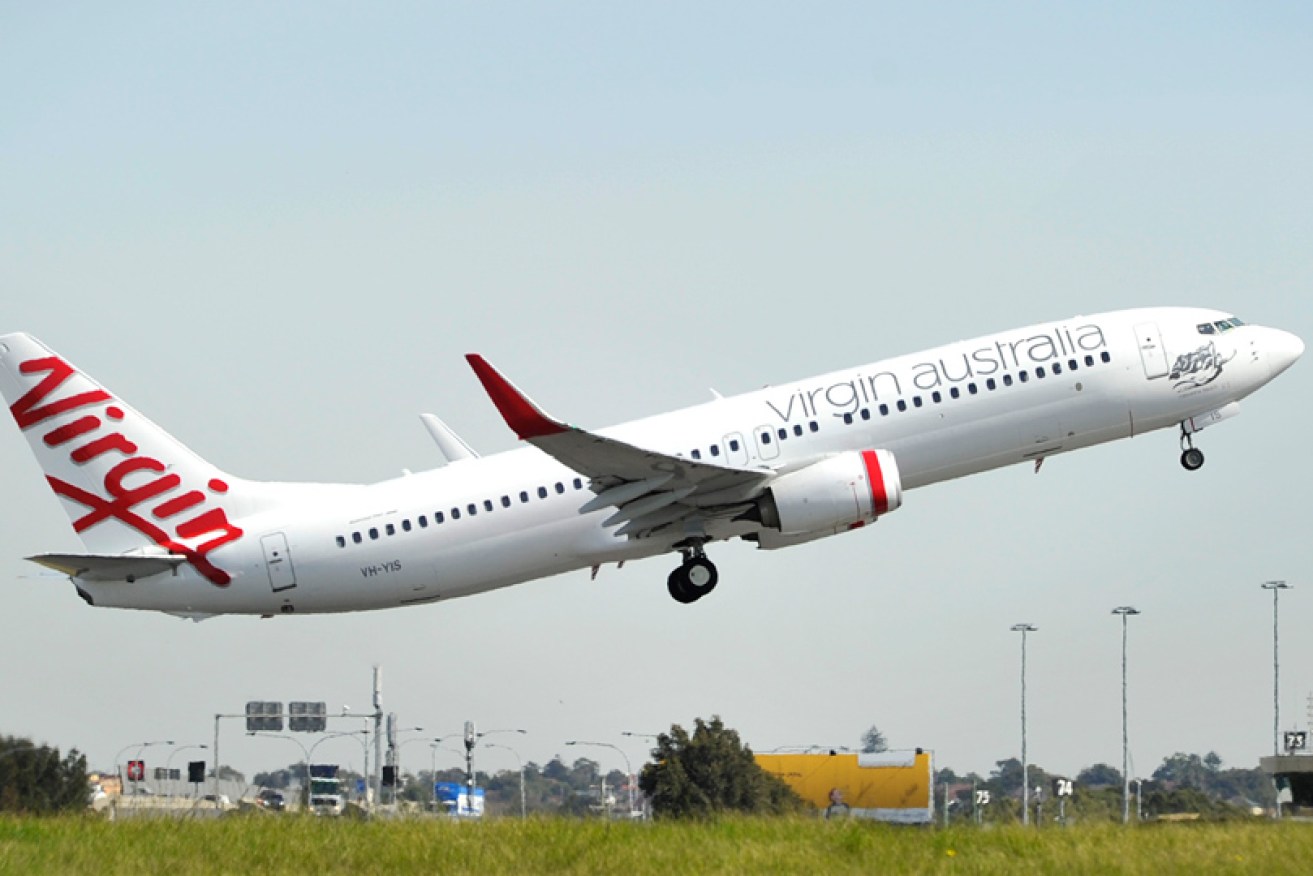Virgin at a ‘tipping point’ as it posts seventh annual loss in a row


Virgin posted a $315.4 million after-tax loss in 2018-19, its seventh loss in a row. Photo: AAP
Massive job losses at Virgin Australia may be just the beginning of a massive cost-cutting crusade, as the embattled airline faces the biggest fight of its life.
Virgin boss Paul Scurrah revealed on Wednesday the carrier would slash 750 head office and corporate jobs to try and save $75 million in the 2020 financial year, as the airline announced its seventh straight year of losses.
Aviation consultant Dr Tony Webber said the result was a watershed moment for Virgin, which was now teetering on the brink.
“They are absolutely at a real tipping point,” Dr Webber said.
“They had a loss before tax of $295 million and they had $200 million [loss] last year. It’s just not a sustainable model. I would imagine the airline’s owners would be pulling their hair out.”
Virgin reported an after-tax loss of $315.4 million, which comes after a $653.3 million loss after tax in 2018, making for Virgin Australia’s third-worst annual performance.
It referred to the year mildly as a “challenging trading environment” during which it battled soaring fuel costs and a tumbling Aussie dollar.
The airline’s share price has dived from 70c in March 2010, to a close on Wednesday at a 10-year low of 15.5c.
Dr Webber, managing director of Airline Intelligence & Research and a former Qantas chief economist, said Virgin’s ambitious strategy reboot about 10 years ago to take on Qantas in the premium and business end of the market was the right one. It’s just that it spent far too much trying to achieve it.
“Virgin spent a lot of money trying to lift its product closer to Qantas, but it overreached and spent way too much. So that’s what Paul Scurrah has to do now – slash costs – but do it in a way that doesn’t affect the product.”
Dr Webber said Virgin had overspent on poaching “a lot of expensive, non-operational labour from Qantas”, on its name change and rebranding, expanding its “complicated” fleet and upgrading airport lounges.
The $315.4 million loss for 2018-19 comes only weeks after the airline’s chief executive Mr Scurrah circulated an internal memo informing staff the company would pause or halt any new projects or reforms in a bid to return the airline to profit.
The airline also reduced capacity (the number of seats available) by 1.5 per cent in May and June and has paused fleet renewal, with no new aircraft arriving in 2019 and no further new aircraft due until July 2021.
But even the axing of 750 jobs won’t be enough, Dr Webber said.
“That $75 million [in expected savings] is not even a third of that $295 million [before-tax] loss,” he said.
“Taking all that labour out won’t be enough, and so they need to cut out unprofitable routes.”
That, he said, could mean cuts to capacity on “second-tier” routes, such as regional cities like Townsville, Port Macquarie or Mildura.
He speculated Virgin would trawl through route by route, weeding out or reducing capacity on the unprofitable ones.
Aviation consultant Neil Hansford agreed that the airline’s haemorrhaging of cash was of huge concern and it must adopt some radical cost-cutting measures, or face oblivion.
“The real problem is how long can the trend continue before the money runs out?” Mr Hansford asked.
“The airline has about $1.7 billion in cash. But when you are losing that amount of money, that [$1.7 billion] would go very quickly, and they don’t have the kind of money to be putting deposits on new aircraft and the like, to be expanding in any way.”
It isn’t all Virgin’s doing
Mr Hansford believed Virgin needed to abandon its plan to take on Qantas and return to its low-fare airline roots.
Dr Webber, though, maintained Virgin’s strategy to take Qantas on was the right one, but fighting a giant like Qantas with deep pockets that give the airline room to buy market share makes Virgin’s task a massive one.
“Part of Virgin’s weakness is not of its own doing – a lot of this is also about Qantas. Much of this is simply that Qantas is a formidable competitor.”
He cited examples of Virgin offering sharp discounts and benefits to corporates, only to watch Qantas come over the top and trump its smaller competitor on price and benefits.
Dr Webber said Virgin, as a largely domestic carrier, was also harder hit by rising fuel costs than Qantas.
While the larger airline also had to pay higher fuel costs, it made a higher yield on its international business as a result of the weaker dollar.
But Virgin, he maintains, was still making all the right moves and was fighting in the right corner of the market.
“It has to keep growing, but in as lean a way as it can, keep its good customer service and on-time performance, get rid of tired routes and just hope the economy improves.”








